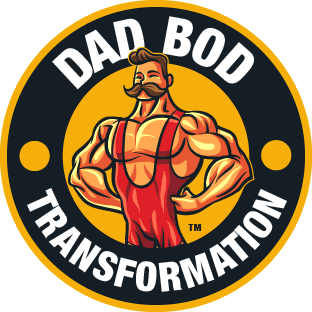Let’s reduce this by 6%*shall we?
This is general and I am just providing you with some information that I’ve studied from the Clean Health Fitness Institute and I am calling this a strategy instead of a program. You will have the knowledge and references below for those who wish to read further and whether or not you wish to employ this strategy will be entirely up to you and Dad Bod Transformation is here to help, but we don’t force anything upon anyone.
First thing first. When it comes to a fat loss transformation, there will be a difference between overweight or obese vs. anyone else, and this strategy is for the folks that have tried everything and nothing worked the way they want, please keep that in mind.
To achieve your goal you will need to address your lifestyle first, move to your diet, and exercise after that.
This is a periodization diet and not a Ketogenic one, our goal is to restrict the calories and to ensure that our macros are set properly. Calories are what makes you lose fat, and macros will be there to ensure that we feel good during the transformation and they also serve as diet manipulation.
It is no news, overweight or obese people will have some type of metabolic issues, they might lack much-needed nutrients and they will be leptin and insulin resistant, and this is to undo any metabolic damage that you might have.
Periodization Diet Phase 1
One of the reasons behind our periodization diet is to fix the leptin and insulin resistance, fill our body with all nutrients, and also to prevent adaptation. Our bodies are highly adaptive and if we allow the same routine and stimulus, the body will adapt, and with that stop responding, regardless of what the goal is, fat loss or muscle gain.
Overweight or obese people can’t respond the same way that athletes do or well-trained population that have been doing this for a while, and that is why we need to take a different approach.
Nutrition
We’re going to take a more aggressive approach and keep this at a consistent level from week 1 to week 12. For the most accurate results to determine our caloric deficit we would need to know our body fat percentage and when you do, the Dad Bod Transformation TDEE calculator will help you with the rest. DBT TDEE calculator will help us to determine our caloric deficit but please don’t follow the macronutrients from the calculator, calories only.
If you don’t have access to i.e. DEXA, find some alternatives, such as SECA at your doctor’s office and even InBody will do. And if you are limited to all of the above, a SMART scale will have to serve the purpose, but it is not as accurate as DEXA or SECA.
Since this is a periodization, for the first 2-4 weeks we will limit our carb intake to 50g and this must come from the veggies only. The duration from 2 to 4 weeks will depend on your body fat percentage, if you hold more than 30% this should be 4 weeks and if you’re under 20% for 2 weeks and somewhere in between for those that don’t fall into these criteria and it should be self-explanatory.
Your target protein should be based on your age, body weight, and your lifestyle and you can use this calculator to find out how much protein is needed for your goal.
Now that we have our carbs and protein, both calories and the grams, we would need to add healthy fats and this would be by filling in the gap with the remaining calories.
Example based on 2,000 calories for 180lbs person
50g of carbs = 200 calories
180g of protein = 720 calories (I am using a gram/pound example here and the recommended top higher-end from what i.e. above protein calculator is recommending)
Total so far 920 calories.
Since I need 2,000 calories per day, I would need to calculate the difference and know what my healthy fats calories will be and that is 1,080 calories.
2,000 total calories – 920 = 1,080 calories.
Protein Sources
It is important for our body that this is not just chicken all day long to be able to handle a variety and also to avoid potential food intolerance and it will be more interesting to process this mentally. Some examples would be Chicken, Turkey, Beef, Pork, Fish, etc.
Carbs From Veggies
There are many reasons for this, and no worries we will reintroduce the other carbs in time and you won’t be without them, but for the first 2-4 weeks, this must be veggies only. Your body will have all of the vital micronutrients which will support things like your brain, mood, and also cardiovascular health and they are full of fiber.
Healthy Fats From Protein
Unlike the Ketogenic diet, we’re not adding any fats and instead, we’re consuming them indirectly and naturally from the protein sources, and this way you won’t have to worry about the large gap in calories from the fat.
Periodization Diet Phase 2
Stage 2 of our periodization diet is where we need to decide whether or not you can have carbs and for less experienced people the answer to this will be no, therefore we will hold the additional carbs till the end of week 4 and experienced people can add 30-40g after 2 weeks since we are working with not added fats, the leaner protein should fill out the gap for the added calories and they should remain the same.
Since we’re all different the extra 30-40g of carbs will need to be allocated according to what best fits your needs, some people prefer to have their carbs in the morning, but others don’t, however it has been generally accepted that the best time to take your carbs will be around the workout and this can be post-workout too. If you’re an early bird, you can have your carbs in AM, and night owls can push their carbs later at night.
If this is 40g it would be recommended to split this into two meals, one would be in the AM if you’re that type of person, and the second one post-workout and for some people, this can also be around bedtime as well. As I said, this will be unique to you and you would need to decide the best time.
Periodization Diet Phase 3
Just like we did in phase 2, we’re going to introduce another carb meal and also 30-40g of carbs and how you fit them in your lifestyle will be personal.
Things to remember
We only periodize macros, not calories and calories should always remain the same. For every gram of carbs that you reintroduce, you will take away calories from fat.
A caloric deficit is the main driver of fat loss here and carbs are added so that you can feel better. If for any reason you start feeling bad, back-off the carbs and switch them with calories from fat and continue.
This is a pretty straightforward strategy and if you have any questions, please post them in the group!
References
- Houtham SD, Rowlands DS. A snapshot of nitrogen balance in endurance trained women. Applied Physiology Nutrition and Metabolism . 2014; 39(2):219-25.
- Antonio J, et al. A high protein diet (3.4 g/kg/d) combined with a heavy resistance training program improves body composition in healthy trained men and women–a follow-up investigation. Journal of the International Society of Sports Nutrition. 2015; 12:39.
- Feinman RD, Fine EJ. “A calorie is a calorie” violates the second law of thermodynamics. Nutrition Journal. 2004; 28: 3-9.
- Lopez-Minguez J, Gómez-Abellán P, Garaulet M. Timing of Breakfast, Lunch, and Dinner. Effects on Obesity and Metabolic Risk. Nutrients. 2019;11(11):2624. Published 2019 Nov 1. doi:10.3390/nu11112624
- Lyons PM & Truswell AS. Serotonin precursor influenced by type of carbohydrate meal in healthy adults. American Journal of Clinical Nutrition. 1988; 47(3 ): 433-439
- McAllister MJ, Webb HE, Tidwell DK, et al. Exogenous Carbohydrate Reduces Cortisol Response from Combined Mental and Physical Stress. Int J Sports Med. 2016;37(14):1159-1165. doi:10.1055/s-0042-113467
- Müller M.J, et al. Metabolic adaptation to caloric restriction and subsequent refeeding: the Minnesota Starvation Experiment revisited. The American Journal of Clinical Nutrition. 2015; 102(4), 807-819.
- Friedl KE, et al. Endocrine markers of semistarvation in healthy lean men in a multistressor environment. Journal of Applied Physiology, 2000;88(5), 1820-1830.
- Almundarij TI, Gavini CK, Novak CM. Suppressed sympathetic outflow to skeletal muscle, muscle thermogenesis, and activity energy expenditure with calorie restriction. Physiological Reports. 2017;5(4):e13171. doi:10.14814/phy2.13171.
- Rosenbaum M, Leibel RL. Adaptive thermogenesis in humans. International journal of obesity (2005). 2010;34(0 1):S47-S55. doi:10.1038/ijo.2010.184.
- Wing RR, Jeffery RW. Prescribed “breaks” as a means to disrupt weight control efforts. Obes Res. 2003;11(2):287-291. doi:10.1038/oby.2003.43
- Byrne NM, Sainsbury A, King NA, Hills AP, Wood RE. Intermittent energy restriction improves weight loss efficiency in obese men: The MATADOR study. Int. J. Obes. 2017 doi: 10.1038/ijo.2017.206.
- Sainsbury A, Wood RE, Seimon RV, et al. Rationale for novel intermittent dieting strategies to attenuate adaptive responses to energy restriction. Obes Rev. 2018;19 Suppl 1:47-60. doi:10.1111/obr.12787

